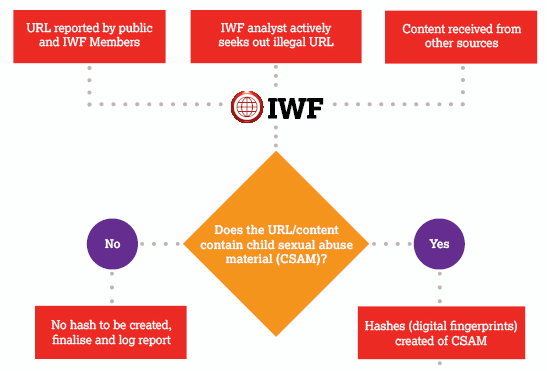-
Tips for becoming a good boxer - November 6, 2020
-
7 expert tips for making your hens night a memorable one - November 6, 2020
-
5 reasons to host your Christmas party on a cruise boat - November 6, 2020
-
What to do when you’re charged with a crime - November 6, 2020
-
Should you get one or multiple dogs? Here’s all you need to know - November 3, 2020
-
A Guide: How to Build Your Very Own Magic Mirror - February 14, 2019
-
Our Top Inspirational Baseball Stars - November 24, 2018
-
Five Tech Tools That Will Help You Turn Your Blog into a Business - November 24, 2018
-
How to Indulge on Vacation without Expanding Your Waist - November 9, 2018
-
5 Strategies for Businesses to Appeal to Today’s Increasingly Mobile-Crazed Customers - November 9, 2018
Google, Facebook and Twitter to remove millions of online images of child
The Internet policing charity has begun sharing the digital fingerprints of indecent images, or so-called hashes, with Google, Facebook and Twitter, as well as Microsoft and Yahoo.
Advertisement
The IWF, which searches the Internet to find and remove abusive images, will provide the online industry a list of hashes embedded in child sexual abuse images to speed up the identification and removal of this type of content that might have been stored in their servers.
The IWF says it removes around 500 web addresses containing child sexual abuse material each day, with one web address sometimes containing up to thousands of images.
Lists will be shared with internet companies that provide services such as the uploading, storage or search of images, filtering or hosting services and social media and chat services, as well as those working in connectivity and data centres.
The move will help prevent images of abuse from being uploaded to the internet in the first place, giving companies the power to stop people from sharing images on their services.
“There are billions of images on the Internet and by creating a digital fingerprint of a single image, you can pluck it out, like finding a needle in a haystack”, the IWF said in a statement released Monday.
As well as technical solutions to prevent paedophiles from sharing explicit images online, the Prime Minister announced the creation of a new criminal offence of “sexual communication with a child”, to close a loophole in the law.
Well each of the images has been assessed by a highly-trained analyst and assigned a “digital fingerprint” (also known as a hash value) – a unique code created by running the image through an algorithm. The hash codes are then compiled into a “Hash List” which can be shared with other agencies to keep tab on all such inappropriate images. Hence, we could be talking about millions of links in no-time; the bigger the hash-list, the better it gets for companies trying to prevent child-porn.
“This is something we have worked on with our Members since the Prime Ministers’ #WePROTECT summit last December”. The IWF said that all eligible members will soon be offered access to the hash list.
Internet security experts said images on the “darknet” would not be detected.
Advertisement
A spokesman said: ‘This technological breakthrough is really positive and should enable the industry to take a far more pro-active role in blocking these horrendous pictures.




























